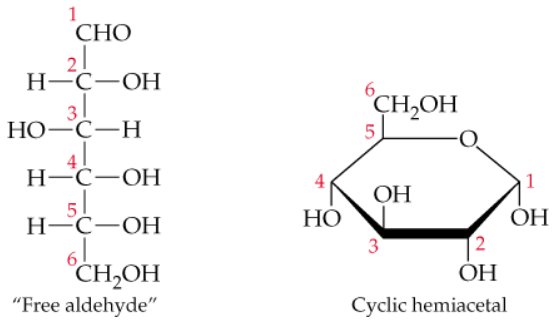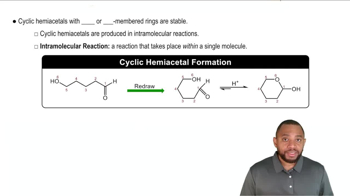Draw the structures of the hemiacetals or hemiketals formed in these reactions:
b.

 Verified step by step guidance
Verified step by step guidance Verified video answer for a similar problem:
Verified video answer for a similar problem:



 1:49m
1:49mMaster Hemiacetals and Acetals Concept 1 with a bite sized video explanation from Jules
Start learning